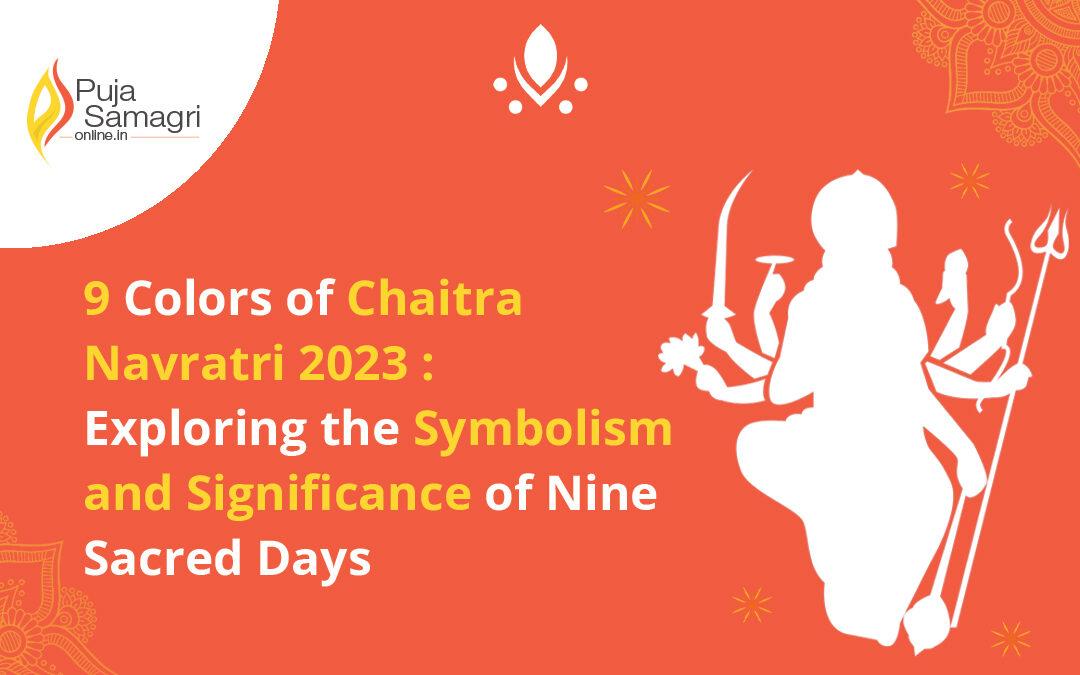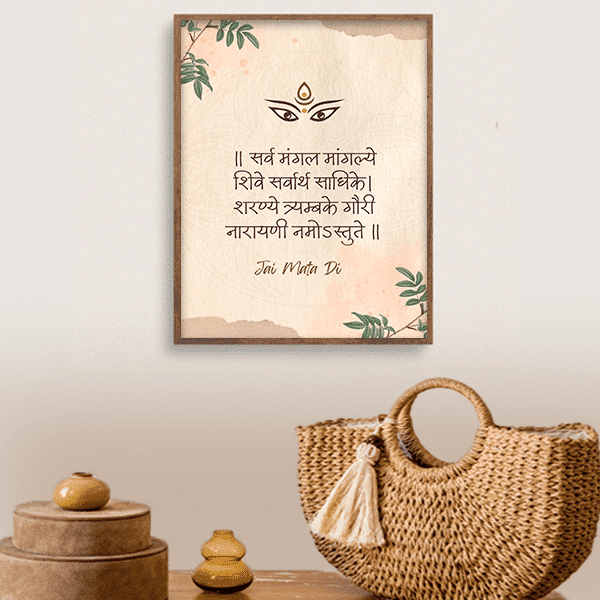9 Colors of Chaitra Navratri 2023: Exploring the Symbolism and Significance of Nine Sacred Days
The festival of Navratri, which means “nine nights” in Sanskrit, is a celebration of the divine feminine and the triumph of good over evil. Each year, the festival is marked by a riot of colors, music, and dance as devotees honor the nine forms of Goddess Durga.
As we gear up for Chaitra Navratri in 2023, it’s time to prepare ourselves for the auspicious colors that adorn each festival day. From the pristine white of day one to the fiery red of day nine, each color has a special significance and is believed to attract divine blessings.
Let’s delve deeper into the symbolism and meaning of the nine colors associated with Chaitra Navratri 2023. Whether you’re a devout follower of the festival or simply curious about the traditions and customs, learn and discover the significance and the magic of Chaitra Navratri.
First Day of Navratri – Maa Shailputri
The first day of Navratri marks the beginning of the nine-day festival, and it is dedicated to worshipping Goddess Shailputri, one of the nine forms of Goddess Durga. The day starts with Ghatasthapna, which involves sowing the seeds of grains in a clay pot to symbolize the presence of the goddess in the house. The person who sows the seeds takes responsibility for their growth by watering them twice daily.
Several rituals are performed on the first day of Navratri, including the Ghat Sthapana Puja, Akhand Jyot Sthapana, offering of flowers and other items of adornment, coconut offering, invoking the goddess, offering bhog and water, and donating items (daan). Devotees also sing aarti and bhajans, chant mantras, and pray to Goddess Shailputri.
Second Day of Navratri – Maa Brahmacharini
The second day of the Navratri festival is dedicated to worshiping Goddess Brahmacharni, one of the nine forms of Goddess Durga. This day represents the height of purity and spirituality. Goddess Brahmacharni is depicted wearing a white saree with a light orange border, holding a water pot or Kamandal in one hand and a Rosary in the other.
Those who offer their complete devotion to Maa Brahmacharni on this day observe a fast and chant mantras and are said to receive blessings of success, wisdom, and knowledge.
Third-Day of Navratri – Maa Chandraghanta
The third day of the Navratri festival is dedicated to worshipping Goddess Chandraghanta, one of Goddess Durga’s nine incarnations. She is known for having a half-moon on her forehead, which resembles a bell (Ghanta), and gives her the name Chandraghanta Devi.
On the third day of Navratri, Goddess Chandraghanta is depicted in a beautiful and peaceful form, wearing white attire and riding a tiger or lion. She has three eyes and ten hands, holding a lotus flower, arrow, bow, and Jaap Mala in her right hand, while the fifth hand is in the Abhaya Mudra pose. In her left hand, she holds the Trishul, Gada, Sword, and Kamandal, while the fifth hand is in the Varada Mudra pose.
Fourth Day of Navratri – Maa Kushmanda
On the fourth day of the Navratri Puja, devotees pay homage to Goddess Kushmanda, who is one of the nine incarnations of Goddess Durga. She is also known as Adishakti, Adiswarup, and Ashtabhuja Devi or Ashtabhujadhari Devi, and is revered worldwide.
According to Hindu mythology, it is believed that the universe came into existence with the divine smile of Goddess Kushmanda.
The fourth day of Navratri Puja is observed similarly to the other days, with the worship of Kalash and Lord Ganesha, followed by Goddess Kushmanda. After worshipping her, devotees are encouraged to worship Lord Shiva and Brahma.
Fifth Day of Navratri – Goddess Skandmata
On the fifth day of Navratri, devotees worship Goddess Skandmata, the fifth incarnation of Goddess Durga. Skandmata is known as the mother of Skanda Kumar, who was the commander-in-chief against the demons. She is the daughter of Himalaya and the wife of Lord Shiva. Skandmata is also known as Mata Gauri, Uma, Parvati, Padamasana Devi, and Maheswari.
She is the daughter of the king of mountains, hence known as Parvati. She is also called Padamasana Devi, as she meditates while seated on a lotus flower. And, since she is married to Lord Mahadev, she is known as Maheswari. The rituals of the fifth day of Navratri are similar to those of the other days.
Sixth Day of Navratri – Goddess Katyayani
On the sixth day of Navratri, people across the globe worship Goddess Katyayani, the sixth incarnation of Navdurga. As per Hindu mythology, Sage Katyayana performed intense penance to please the Gods and requested Goddess Durga to be born as his daughter.
Eventually, his wish was granted, and Goddess Durga was born to him on Dakshin Krishna Chaturdashi. Hence she is known as Katyayani. Goddess Katyayani led the war from the side of the Gods to protect them from the demons. She is known to be a fierce warrior who defeated the demon Mahishasur to free the Gods from his torment. Despite her violent nature, she blesses her devotees with affection and fulfills their true wishes.
Seventh Day of Navratri – Kalaratri Maa
On the seventh day of the Navratri festival, devotees engage in religious activities and show their devotion to the goddess. They worship the seventh incarnation of Goddess Durga, Kalaratri, who is believed to be the most violent goddess among the Navdurga. Despite her fearsome appearance, devotees should not be scared of her as she blesses them with power and protects them from all kinds of evil. Kalaratri is also known by the names “Shubhankari” and “Kali Maa” and is known for her ability to quickly defeat Asuras and demons.
Eight Day of Navratri – Maa Mahagauri
On the eighth day of Navratri, also known as Maha Pooja, devotees honor Goddess Mahagauri, the eighth incarnation of the nine goddesses. Mahagauri is Lord Shiva’s wife and is called “Mahagauri” due to her extremely fair complexion, similar to that of the moon or snow. She has several other names, such as Shwetambardhara, Vrisharudha, Chaturbhuji, and Shambhavi, each representing a specific characteristic or attribute of the goddess.
Ninth Day of Navratri – Goddess Siddhidatri
On the final day of Navratri, devotees celebrate the puja dedicated to Maa Siddhidatri, who is the ninth form of Goddess Durga. She is also known as Siddhidatri Maa because she offers her devotees all types of Siddhis or perfections. Another name for Maa Siddhidatri is Goddess Lakshmi, who symbolizes wealth, happiness, and success. Siddha, Gandharva, Asura, Deva, and Yaksha all worship this ninth avatar of Goddess Durga. According to the Markandeya Purana, there are eight Siddhis types: Anima, Mahima, Garima, Laghima, Prapti, Prakamya, Ishitwa, and Vashitva. By offering sincere devotion and a pure heart during the puja, devotees can receive the blessings of Maa Siddhidatri and attain all these Siddhis.
Final Thoughts
The festival of Navratri is a time of renewal, devotion, and celebration. It gives us an opportunity to reflect on our inner selves and seek the blessings of the divine feminine. And with each passing day of Navratri, as we adorn ourselves in the sacred colors and offer our prayers, we are reminded of the eternal truth that goodness and light will always triumph over darkness and evil.
Celebrate Chaitra Navratri 2023 with puja samagri online and welcome the joy, peace, and prosperity in your life. May you be blessed with the grace and blessings of Goddess Durga, and may you emerge from the festival with renewed hope, strength, and positivity. Jai Mata Di!






